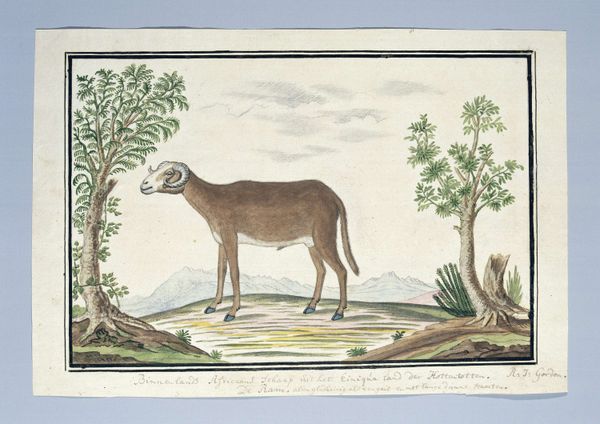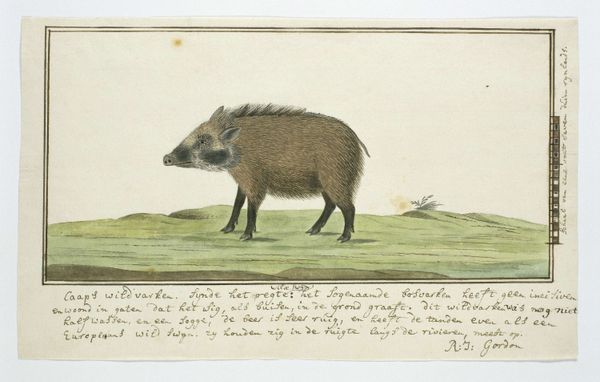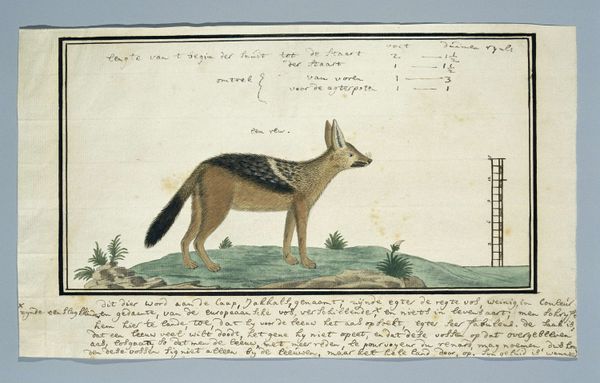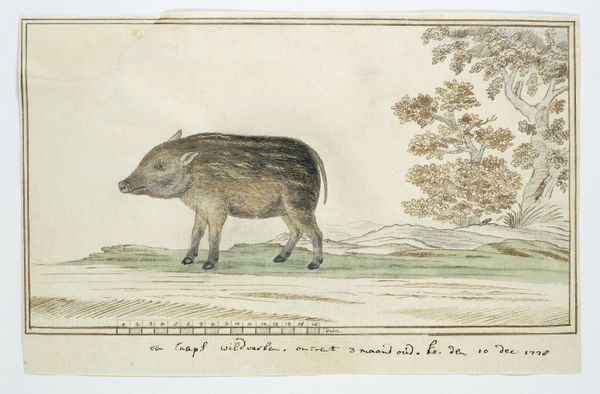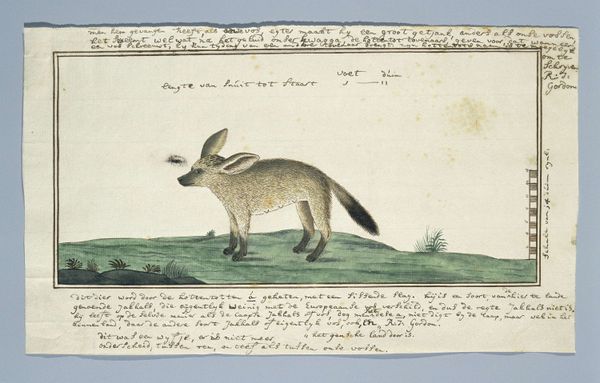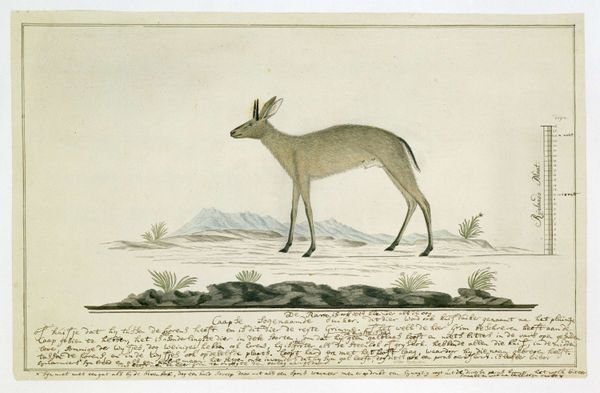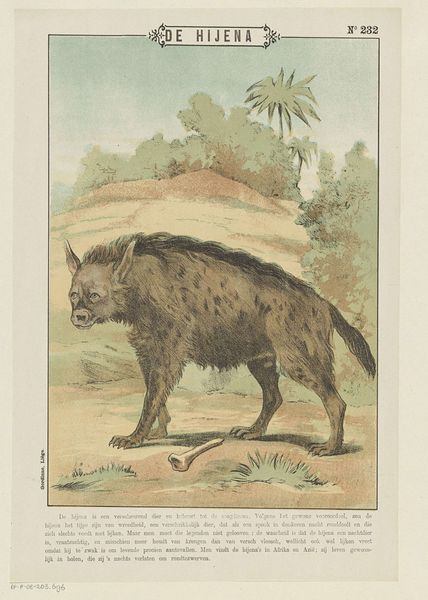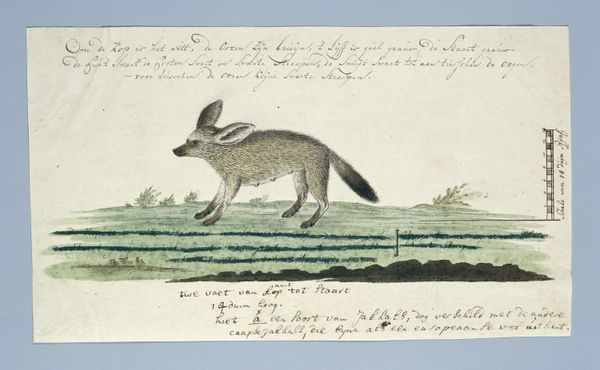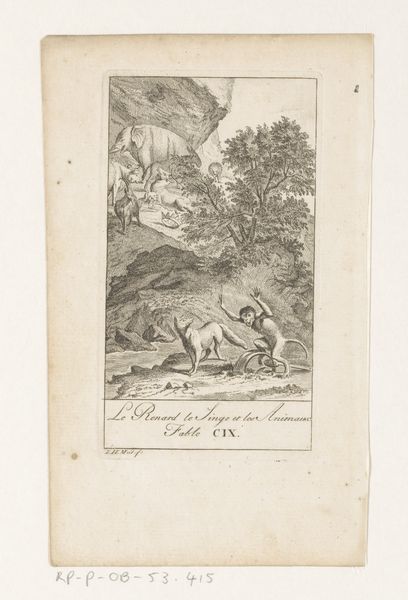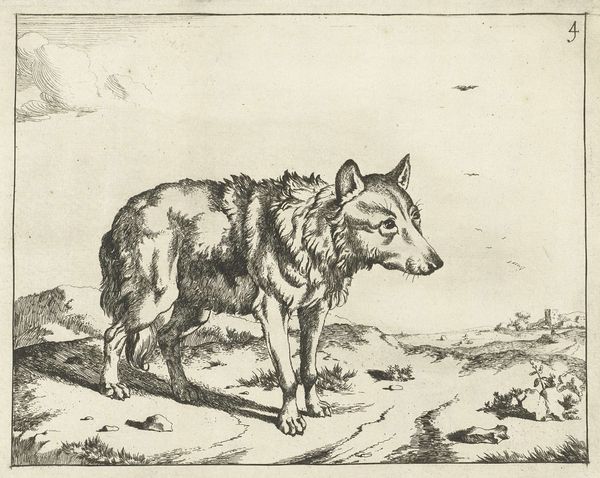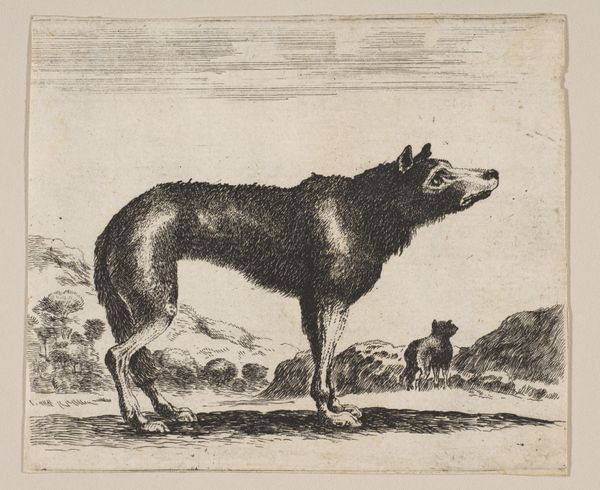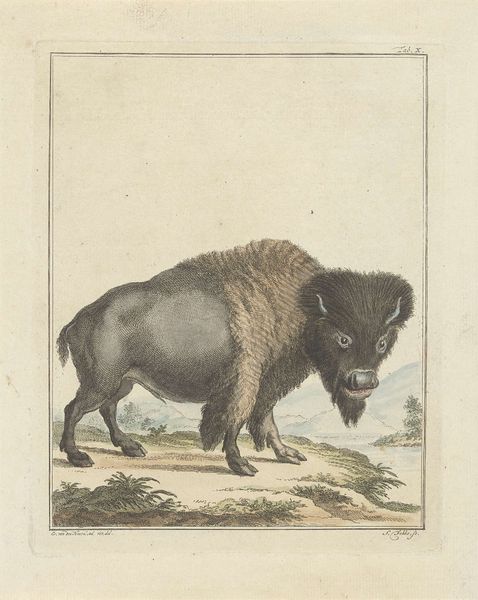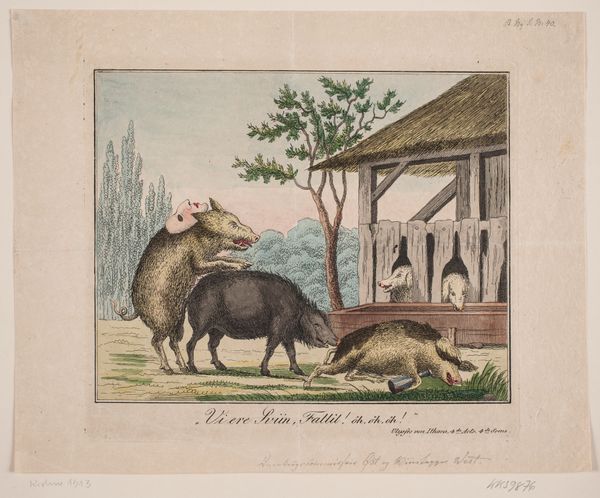
drawing, coloured-pencil, watercolor
#
drawing
#
coloured-pencil
#
landscape
#
figuration
#
watercolor
#
coloured pencil
#
watercolour illustration
#
history-painting
#
botanical art
#
realism
Dimensions: height 660 mm, width 480 mm, height 230 mm, width 364 mm, height 172 mm, width 351 mm
Copyright: Rijks Museum: Open Domain
Editor: This is "Phacochoerus aethiopicus aethiopicus (Cape warthog)", created around 1778 by Robert Jacob Gordon. It's a drawing using watercolor and coloured pencil. It looks like quite a straightforward illustration, but something about the textures used to create the warthog stands out. What do you see in this piece? Curator: This isn't just a straightforward illustration. It is, essentially, about resource extraction. Consider the materials: watercolor, pigment, paper. These were commodities, shipped across continents, representing Dutch mercantile power reaching into Southern Africa. Editor: Resource extraction, I see... Could you say a bit more about that? Curator: Think about what is being extracted and how the Cape warthog itself becomes a kind of commodity here, categorized and visually “captured” through artistic labor. Gordon wasn't simply observing; he was participating in a system of colonial knowledge production and exploitation. The creation of the drawing is inseparable from the act of claiming and defining the territory itself. Even the handwriting at the bottom ties the drawing down to a place by way of a common language that has become canon. It creates the notion that one reading that inscription becomes an absolute fact that everyone agrees upon. It challenges traditional views about the boundaries between science and art. What appears as scientific illustration also functions as an exercise in asserting dominion through material means. Editor: That’s fascinating; I never would have thought of it in terms of the materials used. Curator: By focusing on these processes, we realize how deeply embedded the work is within global networks of trade, knowledge, and colonial power. The materiality of art speaks to its place within socio-economic systems, constantly reflecting the power dynamics in its moment. Editor: That really changes how I see this, turning it into more than just a drawing of a warthog! Curator: Indeed. And seeing this image for its embedded politics gives a more profound meaning for all of us who share it today.
Comments
No comments
Be the first to comment and join the conversation on the ultimate creative platform.
